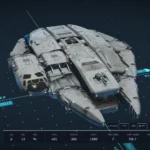Are you ready to venture into the depths of space with Starfield, the highly anticipated game from Bethesda? Before you embark on this intergalactic journey, it’s crucial to understand the minimum requirements that will ensure a smooth and immersive gaming experience. Whether you’re a seasoned gamer or new to the world of gaming, this blog post will provide you with all the information you need. So, grab your spacesuit, buckle up, and let’s explore the minimum requirements for Starfield together.
Understanding the Minimum Requirements for Starfield
As the anticipation for Starfield reaches a fever pitch, the gaming community is eager to ensure their battlestations are primed for the odyssey ahead. Embarking on this stellar adventure demands a power-packed PC, one that can transcend the realms of conventional gaming. Let’s chart the course for the essential gear needed to navigate the cosmic expanse of Starfield.
| Component | Minimum Requirement |
|---|---|
| Graphics Card | NVIDIA GeForce 1070 Ti or AMD Radeon RX 5700 |
| CPU | Intel Core i7-6800K or AMD Ryzen 5 2600X |
| Memory | 16 GB RAM |
| Storage | 125 GB of SSD space |
| Operating System | Windows 10 version 21H1 (10.0.19043) or later |
At the heart of this digital escapade is a graphics powerhouse. You’ll need an NVIDIA GeForce 1070 Ti or an AMD Radeon RX 5700 to breathe life into the sprawling celestial vistas. These graphics cards stand as sentinels of visual fidelity, ensuring that every interstellar horizon is a feast for the senses.
Next in the command hierarchy is the CPU. A formidable Intel Core i7-6800K or AMD Ryzen 5 2600X will serve as the central nexus of your spacecraft, interpreting and executing complex commands with precision. These processors are akin to the seasoned pilots of the PC world, navigating the computational cosmos with ease.
Memory, like the vastness of space, is a crucial frontier for Starfield. With a minimum of 16GB RAM, your PC’s neural network will be robust enough to handle the game’s intricate ecosystems without succumbing to the black holes of lag and stutter.
Astronomical explorations require ample storage, and Starfield is no exception. Packing your rig with at least 125GB of SSD space is not just a recommendation—it’s a launch protocol. The SSD’s swift read-write capabilities are the warp drives of gaming, propelling you through load screens at the speed of light.
Finally, your operating platform must be no less than Windows 10 version 21H1 (10.0.19043) or its subsequent iterations. This OS is the ground control of your setup, a base that must be up-to-date to synchronize with Starfield’s advanced technologies.
As we prepare for lift-off, remember that these minimum requirements are the baseline for entry into Starfield’s universe. They ensure not just playability but a portal to an immersive experience that’s as boundless as the cosmos itself.
Is a 3070 Graphics Card Suitable for Starfield?
When it comes to traversing the vast expanse of Starfield’s universe, a robust graphics card isn’t just a luxury; it’s a necessity. The NVIDIA GeForce 3070, a powerhouse within the realm of modern GPUs, emerges as a formidable ally in this cosmic journey. While the minimum requirements suggest the NVIDIA GeForce 1070 Ti or AMD Radeon RX 5700, the superior capabilities of the 3070 ensure that it doesn’t just meet the baseline but transcends it, promising an experience that is both graphically rich and seamless.
For gamers seeking assurance, comparisons between the 3070 and the recommended specifications reveal a comforting truth. The 3070 stands tall, with its advanced architecture and higher throughput, indicating that it is not only suitable but may actually provide a level of performance that could enhance the visual fidelity of Starfield far beyond the minimum expectations. More insights on the game’s demands can be gleaned from GamesRadar, offering a comprehensive guide on what to anticipate from this highly anticipated space exploration title.
With the 3070’s adeptness at handling intensive graphical workloads, players can look forward to embarking on their interstellar adventure with settings turned up high, ensuring that every star, planet, and spacecraft is rendered in exquisite detail. The NVIDIA GeForce 3070 doesn’t just carry the torch; it amplifies the flame, setting a new benchmark for gaming rigs aiming to conquer the future of virtual space odysseys.
Therefore, if you’re fortunate enough to have this card within your PC’s chassis, you can rest easy knowing that you’re well-prepared for the demands of Starfield. The 3070 not only aligns with the expected standards but also provides a cushion of performance that safeguards against the rapid advancements in gaming visuals. It’s a testament to the ever-evolving landscape of PC gaming, where today’s premium hardware becomes tomorrow’s recommended standard.
Embracing the 3070 for Starfield is more than just meeting requirements; it’s about ensuring that every particle effect, every ray of light, and every texture is displayed with the utmost clarity and smoothness. It’s about future-proofing your gaming experience, and with a 3070, the future looks exceptionally bright.
FAQ
Q: What are the minimum requirements for Starfield?
A: The minimum requirements for Starfield are as follows:
– Operating System: Windows 10 version 21H1 (10.0.19043) or later.
– Processor: AMD Ryzen 5 2600X or Intel Core i7-6800K.
– Memory: 16 GB RAM.
– Graphics: AMD Radeon RX 5700 or NVIDIA GeForce 1070 Ti.
– DirectX: Version 12.
– Storage: 125 GB of available space.
– Additional Notes: SSD is required.
Q: What operating system is required to play Starfield?
A: Starfield requires Windows 10 version 21H1 (10.0.19043) or later.
Q: What graphics card is recommended for Starfield?
A: Starfield recommends using either the NVIDIA GeForce 1070 Ti or the AMD Radeon RX 5700 for optimal graphics performance.
Q: How much storage space is needed for Starfield?
A: Starfield requires a minimum of 125 GB of available space on your storage device. It is recommended to use an SSD for better performance.







